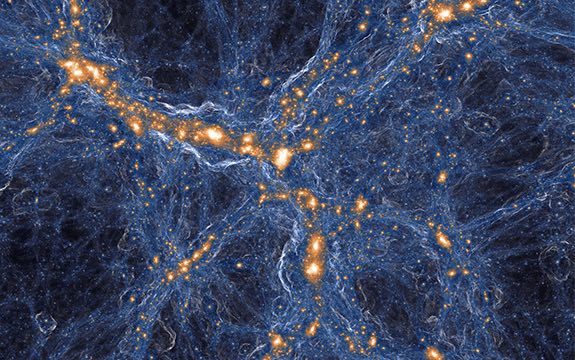A relic cloud of gas, orphaned after the Big Bang, has been discovered in the distant universe by astronomers using the world’s most powerful optical telescope.
The discovery of such a rare fossil, led by PhD student Fred Robert and Professor Michael Murphy of Swinburne University of Technology, offers new information about how the first galaxies in the universe formed.
“Everywhere we look, the gas in the universe is polluted by waste heavy elements from exploding stars,” says Mr Robert. “But this particular cloud seems pristine, unpolluted by stars even 1.5 billion years after the Big Bang.
“If it has any heavy elements at all, it must be less than 1/10,000th of the proportion we see in our Sun. This is extremely low – the most compelling explanation is that it’s a true relic of the Big Bang.”
The Swinburne researchers used the twin 10-metre telescopes of the W. M. Keck Observatory in Hawai’i to observe the spectrum of a quasar behind the gas cloud. The quasar – the bright glow of material falling into a supermassive black hole – provides a light source against which the spectral shadows of the hydrogen in the gas cloud can be seen.
“We targeted quasars where previous researchers had only seen shadows from hydrogen and not from heavy elements in lower-quality spectra,” says Mr Robert. “This allowed us to discover such a rare fossil quickly with the precious time on the Keck telescope.”
Professor Murphy says that it is now possible to survey for these fossil relics of the Big Bang.
“That will tell us exactly how rare they are and help us understand how some gas formed stars and galaxies in the early universe, and why some didn’t.”
Co-authors of the research, Professor John O’Meara, formerly of St. Michael’s College, and Professor Michele Fumagalli, Durham University, discovered the only two other fossil clouds known in 2011.
“Those were serendipitous discoveries, and we thought they were the tip of the iceberg. But no-one has discovered anything similar – they are clearly very rare and difficult to see. Now it’s fantastic to finally discover one systematically,” says Professor O’Meara.








